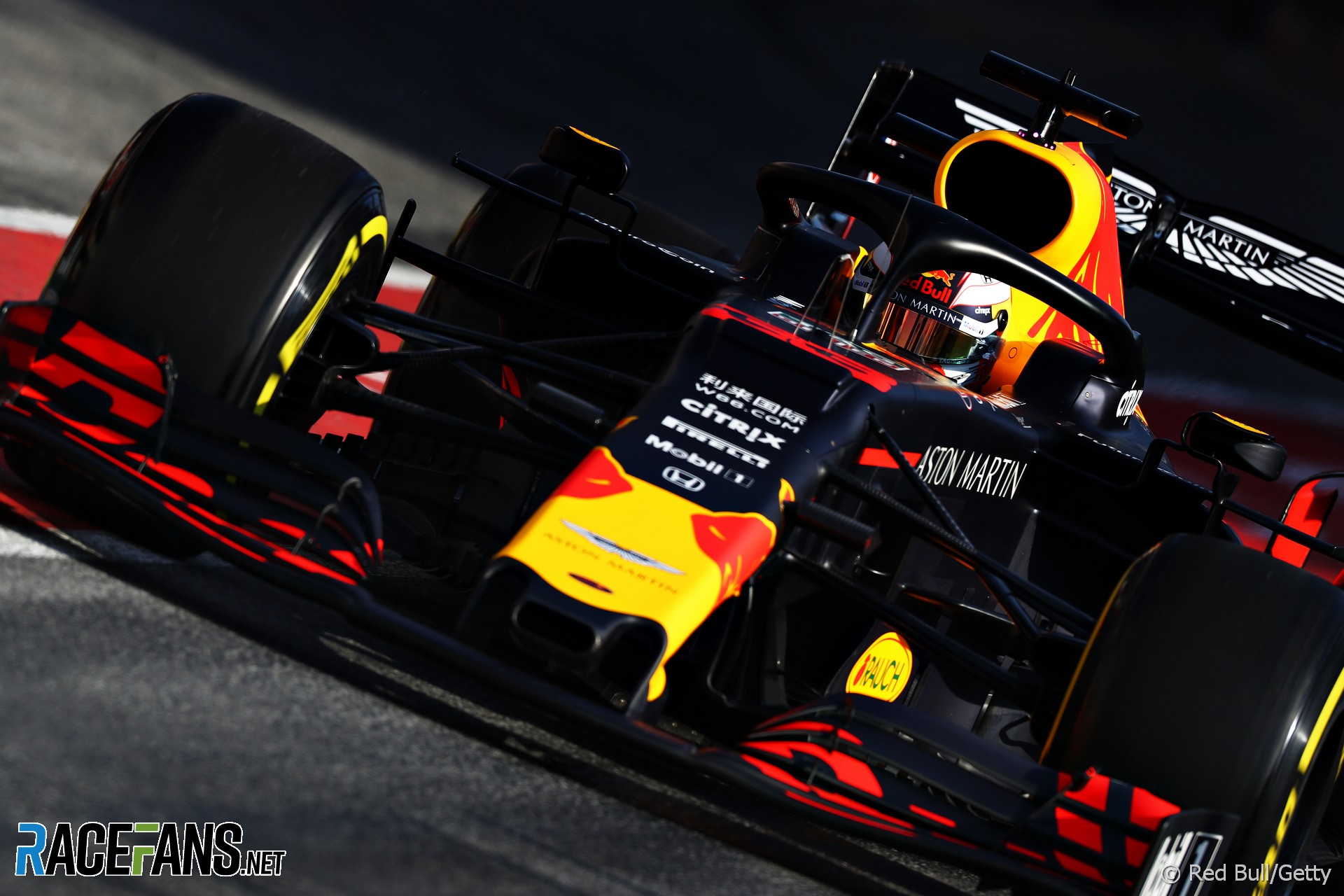It’s tough at the top. As Formula 1’s power unit regulations continue to mature, Mercedes are finding it harder to maintain their lead over the opposition.
But while the law of diminishing returns is making its presence felt in the sixth season since F1’s V6 hybrid turbos were introduced, it’s unlikely to have done enough to prevent Mercedes and one of their drivers from taking the titles for a sixth year in a row.This is for the simple reason that while six team have moved closer to Mercedes on raw performance terms this year compared to last, Ferrari isn’t one of them. The team which was only 0.12% slower than Mercedes on average over 2018 has seen its deficit rise by 0.25% over the first 12 races of 2019. That’s more than any other team besides the struggling Williams.
Teams performance: 2019 versus 2018
The major change for the cars in 2019 was the reshaping and simplification of the front wings. This appears to have helped the midfield as a whole move closer to Mercedes.
Ferrari aside, the only two teams which haven’t got closer are Mercedes’ two customers: Williams, who have been in all kinds of trouble since showing up late to the start of testing, and Racing Point, who were forced to play it conservative with their 2019 chassis as it was designed while the team was in administration 12 months ago.
Advert | Become a RaceFans supporter and
The rest of the field is lapping closer to Mercedes’ pace, as the graph below shows:
Use the ‘switch year’ button to compare how far from the pace each team is this year compared to last season
Teams performance: 2019 race-by-race
Ferrari’s slump means that while most teams have got closer to Mercedes, their closest rival is further behind. That’s partly how Mercedes have enjoyed such a successful start to the season, winning 10 of the 12 races so far.
But the other reason is Ferrari have repeatedly failed to capitalise on their opportunities. They’ve turned up with conclusively the quickest car on three occasions, to which we might also add Azerbaijan, yet not won a single race so far this year.
While Ferrari have failed to make serious headway in catching Mercedes, Red Bull’s gains have been dramatic. Having average 0.94% off the pace in their first eight races with Honda power, over the last four that figure has fallen to 0.34%. That is still slightly higher than Ferrari’s equivalent figure over the same figure, yet Red Bull converted that deficit into two wins.
Advert | Become a RaceFans supporter and
Red Bull therefore look like the more potent threat to Mercedes at the moment. But the next two races feature the long straights of Spa-Francorchamps and Monza, which should play into Ferrari’s hands, and surely represent their best hope for a victory yet.
Another team which has made clear progress in recent races is Williams. They were the slowest team at every single round until Hungary, where George Russell out-qualified both the Racing Points.
That may have been aided by Sergio Perez being compromised by Daniel Ricciardo in qualifying, but there were few if any occasions prior to then when Russell might have been able to capitalise on that kind of opportunity. The coming races will reveal whether the team can realistically be considered points contenders over the rest of the year.
2019 F1 season
- Crying in the Melbourne car park at 2019 grand prix was my career low – Ocon
- McLaren Racing reports reduced £71 million loss in 2019
- Kvyat: Hockenheim podium last year was “my biggest achievement” so far
- How the FIA’s new encrypted fuel flow meter targets Ferrari’s suspected ‘aliasing’ trick
- “He smashed my office door”: 23 must-see moments from ‘Drive to Survive’ season two





Ivan Vinitskyy (@ivan-vinitskyy)
20th August 2019, 8:19
What is “quickest lap time”? Is that during the race? If so, doesnt FL point make this metric incomparable with 2018?
Keith Collantine (@keithcollantine)
20th August 2019, 8:42
@ivan-vinitskyy No it’s the quickest lap time in all sessions – I’ve added an extra bit of text to make that clearer. As you point out, confining it to just lap times set during the race would be misleading and useless. In these articles we’ve always used data from all race weekend sessions.
Tango (@tango)
20th August 2019, 9:29
Wouldn’t it be right to say that apart from the odd rain quali sessions, this means best quali time ?
Keith Collantine (@keithcollantine)
20th August 2019, 9:52
@tango Yeah it’s probably 99% qualifying, 1% final practice.
Jeffrey (@jeffreyj)
20th August 2019, 10:11
@keithcollantine Wouldn’t it be interesting to make a ‘race-pace’ analysis as well?
I mean, this is great analysis but we all know Mercedes and Ferrari have a ‘party-mode’ in qualifying that skews the outcome a bit.
Tango (@tango)
20th August 2019, 10:22
you could argue timing of the last tyre change has a huge impact on race pace too @jeffreyj
Only Facts!
20th August 2019, 9:26
We should see a three way fight for victories in the last races. Ferrari has Spa and Monza as most chances of winning. Red Bull has done good in Singapore, Mexico and Brazil.
But one of them may shift focus to 2020, and shuffle the cards a bit. I believe Ferrari would want to work on their chassis’ concept asap, but Red Bull reaching for second in the constructor’s ranking may not allow them to shift earlier.
Mercedes again is on the sweet spot. They will clinch both titles again early enough to start testing some 2020 parts on the track If they want to.
If anybody wants to beat them, they will have to let 2019 go as well and jump straight to 2020. Do you think one of them may try to go that way? Ferrari or Red Bull?
Matthijs (@matthijs)
20th August 2019, 9:39
I’m not really sure if that is the case. The regulations with practically be the same next year so every pound spend on improving the current car will help the development of next year’s car.
Jeffrey (@jeffreyj)
20th August 2019, 10:17
@matthijs Current upgrades will help next year’s car as well, but if you focus on 2020 you have more time to test upgrades and make sure they work. Churning out upgrades asap and perhaps making a ‘wrong turn’ somewhere could take months to find and undo (see Haas for an extreme example).
Hamilton and Mercedes have already won both championships and if not now, by Russia both RBR and Ferrari will realize that too and focus mainly on 2020, whilst hoping they can beat the other for second with some minor upgrades.
Tango (@tango)
20th August 2019, 10:23
I compeltely agree @jeffreyj. After all, the agile methodology has become standard practice in most industries
Matthijs (@matthijs)
20th August 2019, 10:24
@jeffreyj I haven’t made my point clear. You say that you need time to test updates, especially when you make a wrong turn. I completely agree, but isn’t the track the best place to test the updates? Because the regs stay the same, I think there are many 2020-updates that you can test on a 2019-car.
Jeffrey (@jeffreyj)
20th August 2019, 13:50
@matthijs Perhaps you are right. I mean, what do I know really? Haha
Meanwhile, I read Mercedes is planning it’s biggest power unit upgrade since it’s introduction in 2014….
It’s a totally new concept for the 2020 season and beyond. If this is true I fear Ferrari, Honda and Renault will be miles behind for years again, since I’ve never heard any of them working on a completely new concept.
(It’s a Dutch article citing an Italian article, but from your name, I’m guessing you are Dutch-speaking as well).
hobo (@hobo)
20th August 2019, 19:00
@matthijs – I may be misstating, but I think @jeffreyj ‘s point is that testing this season may only benefit next season (your point) if the team is keeping the same car concept. (…apologies if I’ve put the wrong words in your mouth, @jeffreyj.
If a team thinks that their current concept (let’s just say… Ferrari… for fun) is not working well or does not give them an advantageous development path going forward, and if they plan to introduce a new/different concept next season, then they might not be able to test all of their parts for next year on this year’s car even with the same regs.
I think the secret aerodynamicist called it during preseason testing. Ferrari had a well performing concept with the more centrally-focused front wing elements, but it seems to have a much smaller development window. Maybe that specific issue is exactly as predicted, or maybe it is other things going on. But they need to change next year. So maybe they should take the hit and start focusing on it now.
TdM (@tdm)
20th August 2019, 19:30
It depends on if you are changing the underlying philosophy of your chassis, sounds like they made a fundamental error on their car this year. If that’s a front end aero affecting component many many changes that they could make to this year’s car may not correlate at all to an altered aero philosophy.
Matthijs (@matthijs)
2nd September 2019, 6:37
@hobo Sorry, I didn’t read your comment earlier. It sure makes sense waht you are saying.
Only Facts!
20th August 2019, 10:22
@matthijs Yes, that is right, 2020 will see stable regulations. But in Ferrari’s case, adding more downforce may not mean just a fine tweak, but changing the overall concept of the car.
Mercedes may need some extense changes to get rid of the cooling issues too.
Racing point will have a new car next year.
So nobody is safe…
MEGATRON M12 (@megatron)
20th August 2019, 12:17
Who said that they want to get rid of the “cooling issues “? They purposefully put smaller rads on the cars to benefit them at 18 races while sacrificing the other 2. Seems like a smart strategy to me.
Only Facts!
20th August 2019, 12:35
Mercedes said that. Toto Wolff in one of the interviews post Áustria. He said they were too agressive with the coolling system, and that they are having to turn down the engine in some races.
Or maybe it is just trying to fool us ALL…
Lancer033 (@lancer033)
20th August 2019, 14:54
agree, the real gamble is who is willing to throw away next year and get an early start on 2021 when those rules are finalized. Take 9rh or 10th next year in exchange for a big jump in 2021 like Honda/Brawn or Red Bull did in 2009
spoutnik (@spoutnik)
20th August 2019, 10:56
We often talk about formula 1.5 but this year formula 1.5 just contains Ferrari and Red Bull. Should we call the ex-1.5 Formula 2.0 ?
Only Facts!
20th August 2019, 12:37
Sharp!
What about Wlliams? GP2? :-)
Jelle van der Meer (@)
20th August 2019, 13:01
Yeah that is probably right as GP2 is pre 2017 same as the Williams car performance
Nate
20th August 2019, 21:42
Erm…Keith, I think this proves more that Mercedes have been even more efficient with how they dominate. If this season has proved one thing, you need something freak to happen (like Ferrari dusting off the 2018 spec battery for Bahrain cough cough….., changeable conditions or a vital cooling part left off due to another team protesting it) for anything but the inevitable to happen. It isn’t good for the sport, but it hasn’t gotten harder for them, it’s gotten easier)
T
20th August 2019, 15:04
Remember, “the secret is to win going as slowly as possible”. To suggest that most teams are catching Merc (in part thanks to the myth of diminishing returns) is pretty suspect. The most revealing stat is 10/12 wins (Merc had 5/12 last year), that tells you all you need to know about who’s cutting Merc’s lead: no one.
James Neutron (@phillyspur)
21st August 2019, 21:01
That maxim doesn’t apply to qualifying which is primarily the point of the argument.
T
21st August 2019, 22:18
I would say Merc are likely not running at 100% capacity even in quali. In an efficiency formula, “going slow” will apply to every session.
DB-C90 (@dbradock)
21st August 2019, 0:47
It was to be expected that performance of cars would converge as they always have, just has taken longer in the turbo hybrid era than usual.
One wonders if Red Bulls gains may have occurred sooner if they’d had access to a half decent PU, but it is interesting that the rest of the field has made up quite a bit of ground.
On that basis 2020 should be a good year.
Pity that if history repeats (and it invariably does), we’ll go back to massive gaps again in 2021.
James Neutron (@phillyspur)
21st August 2019, 21:03
The question is who will be in front with that massive gap.